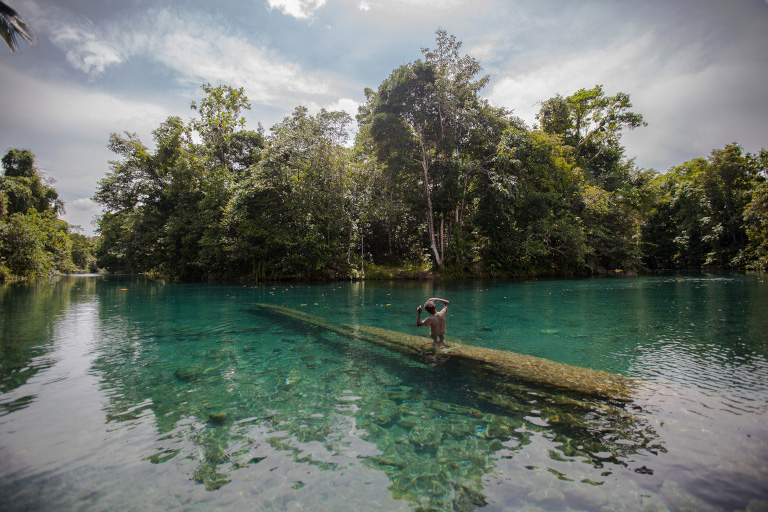- More than half the world’s languages could go extinct by 2100, The United Nations Permanent Forum on Indigenous Issues says.
- Roughly 4,000 of the world’s 6,700 languages are spoken by Indigenous communities and contain knowledge key for conservation and human health, but multiple factors threaten their existence along with their speakers’ cultures.
- Joining the podcast is Jay Griffiths, author of ‘Wild’ and other seminal books about how language and relationship are central to cultural survival, and why connection to the land is a universal human right.
- The guest also draws parallels between humans, nature and culture: “There’s great research that suggests that we learned ethics from wolves [of taking] an attitude to the world of both me the individual, and of me the pack member,” she says.
Deep cultural connection to land and nature are inherent to the human experience and a birthright, says Jay Griffiths, author of WILD: An Elemental Journey (2006). But what happens when communities become displaced, either voluntarily or through force?
The Sydney-based Institute for Economics & Peace estimates that there could be 1.2 billion climate refugees by the year 2050. How do cultures and their people survive amid increasing climate disruption or the violation of their human rights?
A culture “carries itself through language, and also that’s how it makes the land, a spoken place, is through the language,” Griffiths says on this episode of Mongabay’s Newscast. She also draws parallels between humans, nature and culture: “There’s great research that suggests that we learned ethics from wolves [of taking] an attitude to the world of both me the individual and of me the pack member,” in caring for all members of the group.
Griffiths joins the Mongabay Newscast to talk with co-host Rachel Donald about narratives surrounding Indigenous cultures, animal culture, and more.
Listen here:
The United Nations Permanent Forum on Indigenous Issues estimates that by 2100 more than half of all the 6,700 languages spoken today could become extinct. Currently, more than 4,000 of these languages are spoken by less than 6% of the global population, who happen to be Indigenous.
This has implications for conservation and human health, too: a recent study revealed that a large proportion of existing medicinal plant knowledge is linked to threatened Indigenous languages, and in the Amazon, New Guinea and North America, researchers concluded that 75% of medicinal plant uses are known in only one language.

Kali Biru (Blue River) on Waigeo island in Raja Ampat, West Papua, Indonesia. Photo credit: Rhett Ayers Butler.





